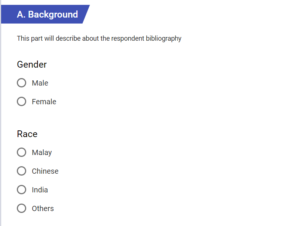
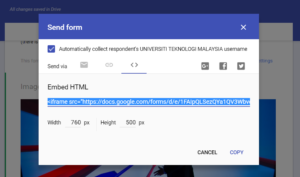



Use, share & embed these tools with UTM eLearning
Collaborative learning medium
Tools for Collaborative Learning
There are courses for best practices of the tools – offer by CTL UTM (refer to their poster – http://utmlead.utm.my/wp-content/uploads /2016/01/kalendarctl2016v1.pdf)
Tagging (Folksonomy)
Hashtag – refer – classify – trend
We can use hashtag in facebook and Instagram has massive of hashtag. Then is easy to search from previous post (anything related to any particular post)
For academic purpose;
1. we can create one hashtag for one subject/ class.
2. During convocation – put hashtag on your pictures – then UTM photographer can grab those.
Creative Commons (CC) is one of several public copyright licenses that enable the free distribution of an otherwise copyrighted work https://creativecommons.org/. From the web, by using search in common button, we can search the materials (picture, video, text, graphics) from google, youtube, Flickr, music, wikimedia)
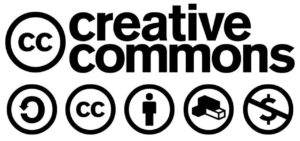
There are six license under CC:
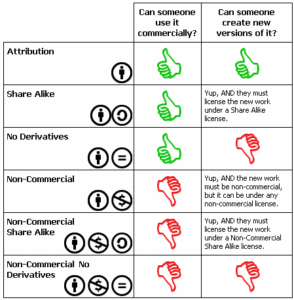
I spend 3 weeks course (9 – 26 July 2017) with them. At Center for Teaching & Learning (CTL) UTM Johor Bahru.
Alhamdulillah – Nice people & good networking.
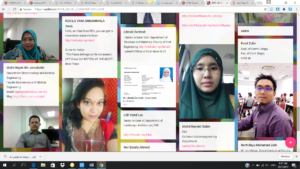
https://padlet.com/UTM_SKUDAI_JOHOR/SPPT2017_UTM
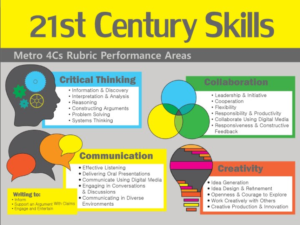
.. 98 ayat – Surah Al Nahl
Allah expect you to seek for Allah refuge, whenever you want to recite Al Quran.
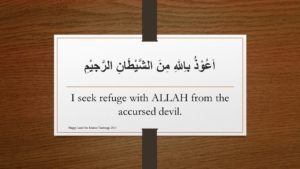
It will happen every single time when we want to engage with Al Quran (recite Al Quran, Solat) – Syaitan will Corrupt your experience with Allah – remember something else, misunderstand, misintepreted, not engage with the Al Quran
Genuinely need Allah to protect and guide us by reciting taawuz, Insya Allah.
Different methods for Active Learning:
Among other active learning strategies
1. Think-pair-share
2. Brainstorming
3. Execute activities using eLearning – next semester we can backup, copy and restore – then please do CQI for improvement.
4. Blank space at powerpoint – Von Risgoff Impact
5. Note check
6. Q&A
7. Two minutes paper – assessment.
8. One Minute paper – summarize the lesson today.
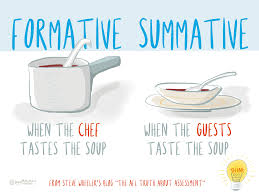
| Assessment (Pentaksiran)
e.g. Course UANP6013, Peperiksaan mid-term (ada perjumpaan ibu bapa amek report card – feedback) |
Evaluation (Penilaian)
e.g. Tesis Viva PhD |
| Formative – continuous on going to improve learning | Summative – final to gauge quality |
| Process-oriented: How learning is going | Product-oriented: What’s been learned |
| Reflective: Internally defined criteria/goals | Prescriptive: Externally imposed standards. |
| Diagnostic: Identify areas for improvement | Judgemental: Arrive at an overall grad/score |
| Flexibile: Adjust as problems are clarified. | Fixed: To reward success, punish failure
(memang bersifat competitive) |
| Absolute: Strive for ideal outcomes.
(Ikut minat pelajar) |
Comparative |
| Cooperative | Competetive |
Tips membetulkan homework anak.
Apabila ada homework yang salah, suruh anak jelaskan macamana dia buat (how knowledge) untuk dapat jawapan yang salah itu. Daripada penjelasan tersebut, kita kenalpasti dan terangkan kenapa dia salah (why knowledge). Kemudian baru betulkan semula (refine how and why knowledge) kesalahan tersebut.
Secara tidak langsung, sebenarnya kita telah berjaya mengajar anak tentang cara mereka berfikir (meta-cognitive knowledge) untuk dapatkan sebarang solusi terhadap masalah. Itulah dia roh berfikir aras tinggi (Higher Order Thinking Skills) dan itulah dia formative assessment.
Previously, we use normal referenced test (ujian rujukan norma – Bell-shaped graph) to assess the students’ assessment. Now, when we move to OBE – we are hardly to get bell-shaped graph anymore. This is because formative assessment use criterion reference test. It is like measuring people’s height – most of Malaysian will be between 1.5-1.7 meters height. But it is still valid for summative evaluation (e.g final exam) to get the bell-shaped graph again.
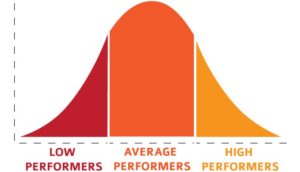
| Measurement scales | Essential features | Zero point | Example |
| Nominal – Hanya untuk nama sahaja – takde nilai nombor tersebut |
Unordered categories | Arbitrary (meaningless) | Course code at university, postcode, jersey number, races |
| Ordinal – Number ada pangkat (order) – tidak boleh mencari nilai purata |
Ordered categories | Arbitrary | Ribbons in a talent contest, a student’s percentile rank, Liekert Scale |
| Interval – Equal units along the scale |
Equal units along the scale. | Arbitrary | Fahrenheit, temperature |
| Ratio -skala yang paling banyak untuk memberi information |
Equal units | Absolute meaning (means tahu mana nilai 0) | Kelvin temperature, disctance in kilometre. |